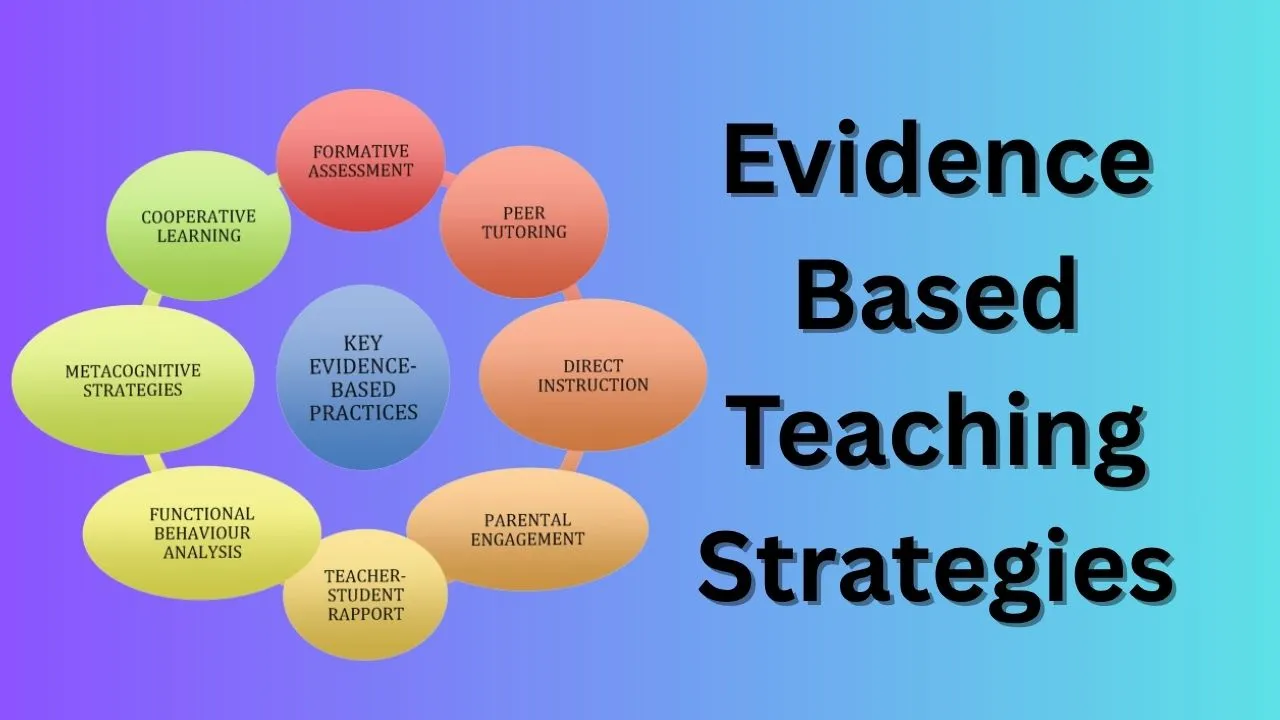In 2025 evidence based teaching strategies are more important than ever. Schools teachers and education experts are looking for practical methods that improve student learning. With more research and data available now it is easier to find strategies that really work. This article explains the top evidence based strategies teachers are using today. It is written in simple language so that anyone can understand and apply these techniques.
What Does Evidence Based Teaching Mean
Evidence based teaching means using methods that are supported by real research. These methods are not based on guesswork or tradition. They are backed by studies that show they help students learn better. This approach is focused on what actually works in the classroom.
Why Use Evidence Based Strategies in 2025
Teachers face many challenges in today’s classrooms. Students come from different backgrounds. Some have learning difficulties. Others speak different languages. Technology is also changing how we teach. In this environment it is important to use strategies that are proven to help students succeed.
Spaced Practice
Spaced practice is one of the best strategies in 2025. It means reviewing material over time not cramming it all at once. For example a student studies for 20 minutes a day over a week instead of studying for two hours the night before a test. Studies show that spaced practice helps students remember information longer.
Why it works Our brains remember better when learning is spread out. This method builds stronger memory pathways.
Retrieval Practice
Retrieval practice involves asking students to recall what they have learned. This can be done through quizzes flashcards or simple questions. The goal is to pull the information out of the brain instead of just reviewing notes.
Why it works Each time students try to recall information they strengthen their memory. It also shows what they don’t know yet.
Explicit Instruction
In 2025 explicit instruction is considered a must for teaching new skills. This means giving clear step-by-step guidance before asking students to practice on their own. Teachers explain and model exactly what to do.
Why it works Students feel more confident when they know what is expected. It also helps struggling learners understand better.
Feedback That Is Timely and Clear
Effective feedback is another strong teaching strategy. Good feedback tells students what they did well and what they need to improve. In 2025 many teachers use tools like Google Classroom or learning apps to give quick feedback.
Why it works Students learn faster when they know what went wrong. It helps them fix their mistakes right away.
Using Visuals and Graphic Organizers
Many learners understand better with the help of visuals. Diagrams charts and mind maps are great tools for making information easier to understand.
Why it works Visual tools break down complex ideas into simple parts. They also help students remember the material better.
Cooperative Learning
In 2025 many classrooms use cooperative learning. This means students work together in small groups. Each student has a role and shares ideas with the group.
Why it works Students learn from each other. Working together builds communication and problem-solving skills.
Scaffolding Instruction
Scaffolding means giving support at the beginning of a task and slowly removing it as the student becomes more confident. For example a teacher might start by solving a math problem with the class. Then students try similar problems on their own.
Why it works Students feel supported while learning new skills. Gradually they build independence.
Differentiated Instruction
Differentiated instruction means changing how you teach based on students’ needs. In 2025 teachers use data and tools to create lessons that match students’ skill levels. Some might work in small groups while others work on individual tasks.
Why it works Not all students learn in the same way. This method helps everyone progress at their own speed.
Metacognitive Strategies
Metacognition is when students think about how they learn. Teachers help students ask questions like What strategy worked for me What can I do better next time
Why it works Students become more active in their learning. It builds critical thinking and helps them solve problems on their own.
Technology Integration
In 2025 technology plays a big role in teaching. Interactive tools videos educational games and online platforms make learning more interesting. But effective teachers use tech with a purpose not just for fun.
Why it works When used well technology supports learning. It gives students access to new content real-time feedback and creative ways to express ideas.
Formative Assessment
Formative assessments are small checks during learning. These could be quick quizzes exit tickets or class discussions. They help teachers see who is understanding and who needs more help.
Why it works Teachers can change their lessons based on what students need. It stops students from falling behind.
Building Positive Relationships
Good teachers know that relationships matter. In 2025 social and emotional learning is part of most classrooms. Students perform better when they feel safe respected and supported.
Why it works A positive environment helps students stay motivated. They are more likely to take risks and try hard.
High Expectations for All Students
Having high expectations means believing that every student can succeed. In 2025 teachers avoid giving up on students who struggle. Instead they provide the right support to help them improve.
Why it works Students often rise to the expectations set for them. Believing in students boosts their self-confidence and effort.
Real-World Connections
Connecting lessons to real life helps students see why learning matters. For example a math lesson might include planning a budget. A science class might involve solving real environmental problems.
Why it works Students stay more engaged. They understand how schoolwork connects to their future.
Continuous Professional Learning for Teachers
In 2025 teachers are always learning too. They attend workshops take online courses and join learning communities. This helps them stay updated on new teaching strategies and research.
Why it works When teachers grow their students benefit. New skills mean better teaching and better learning.
